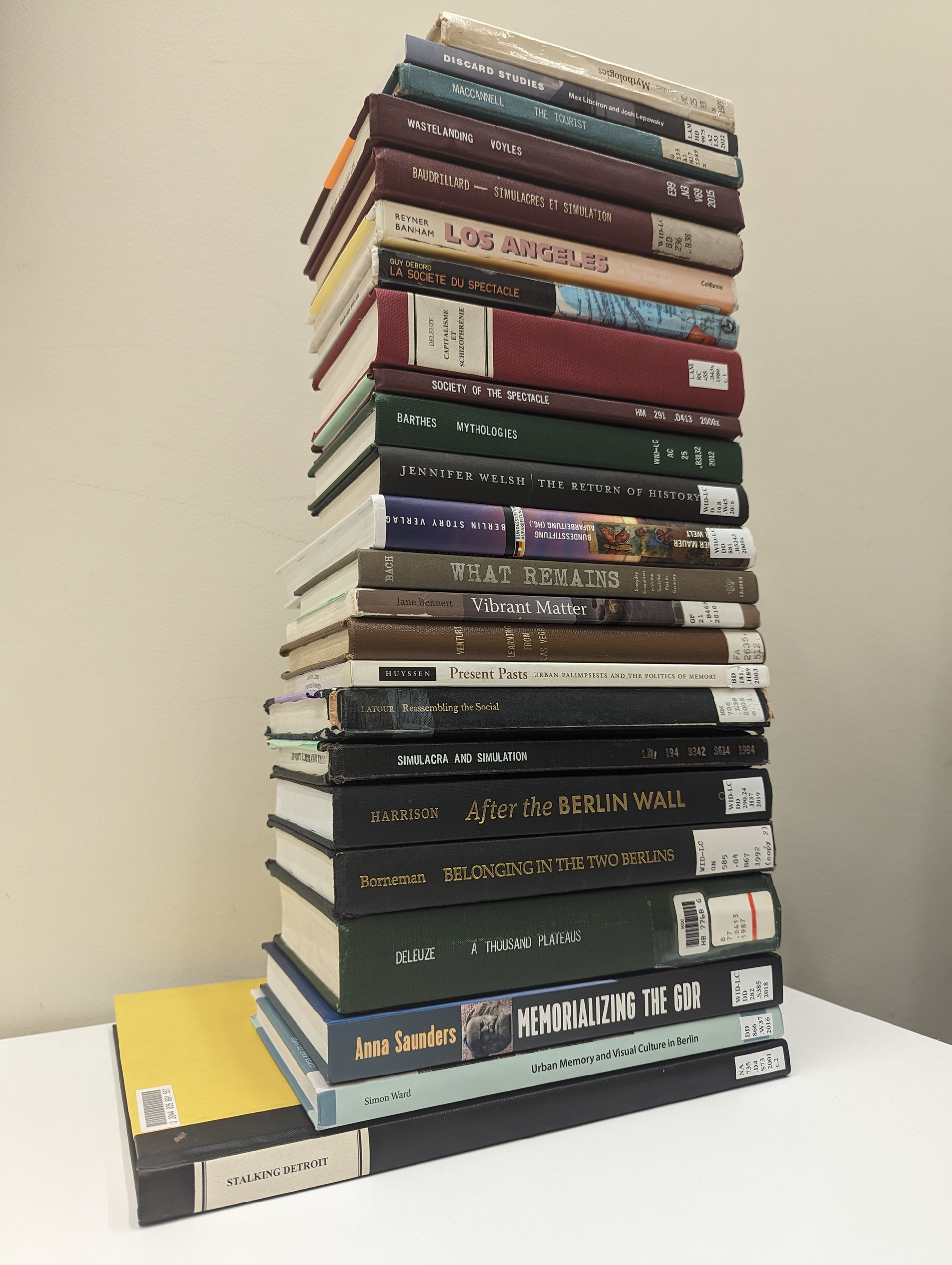I.
Berlin Wall as Mineral
"BerlinWallMineral: on the anthropogenic formation, extraction, and consumption of Berlin Wall concrete." (For SCI-6381: "Power||Energy: Mapping the Thickened Ground of Labor" with Prof. Rosalea Monacella.)

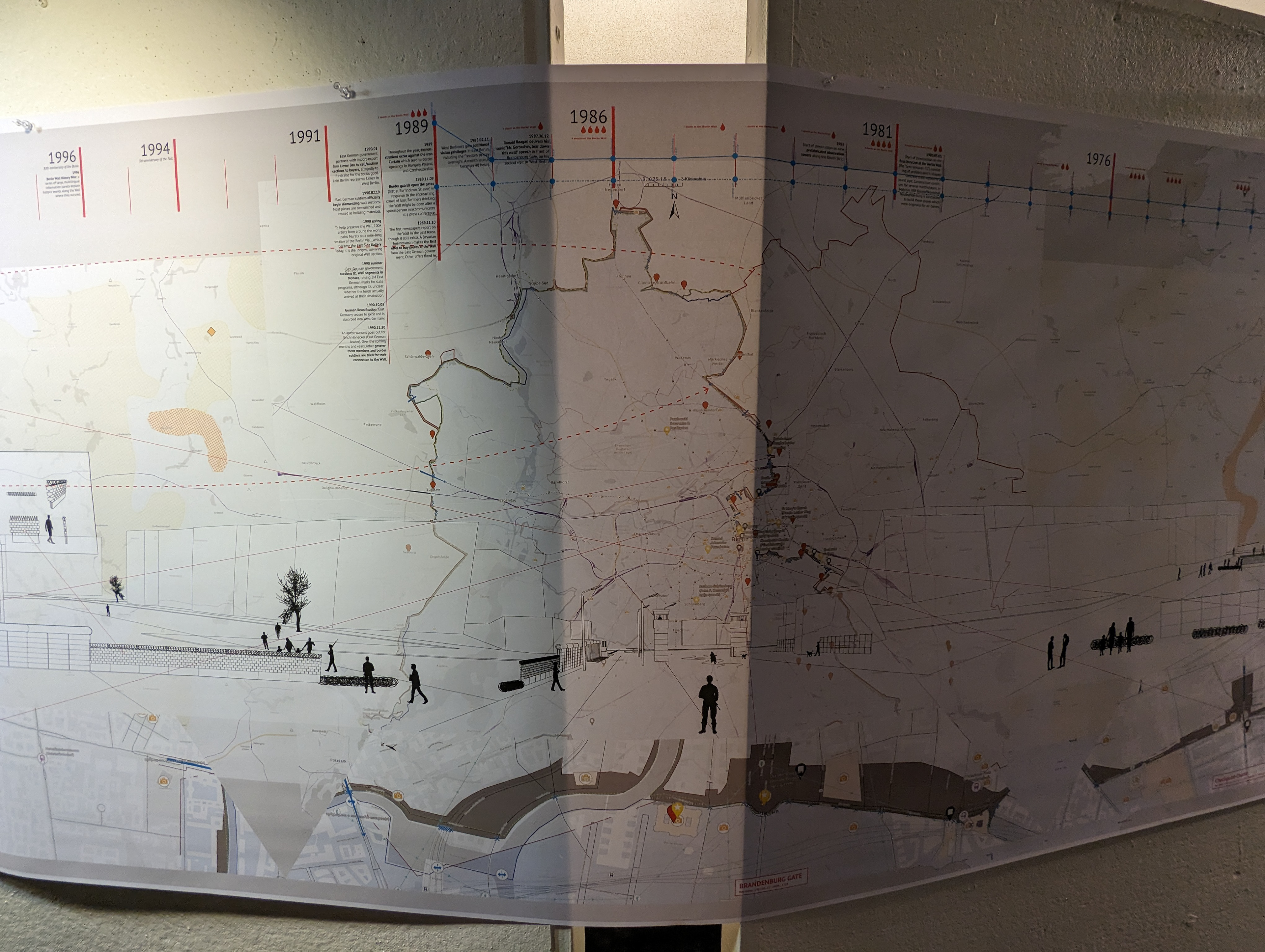


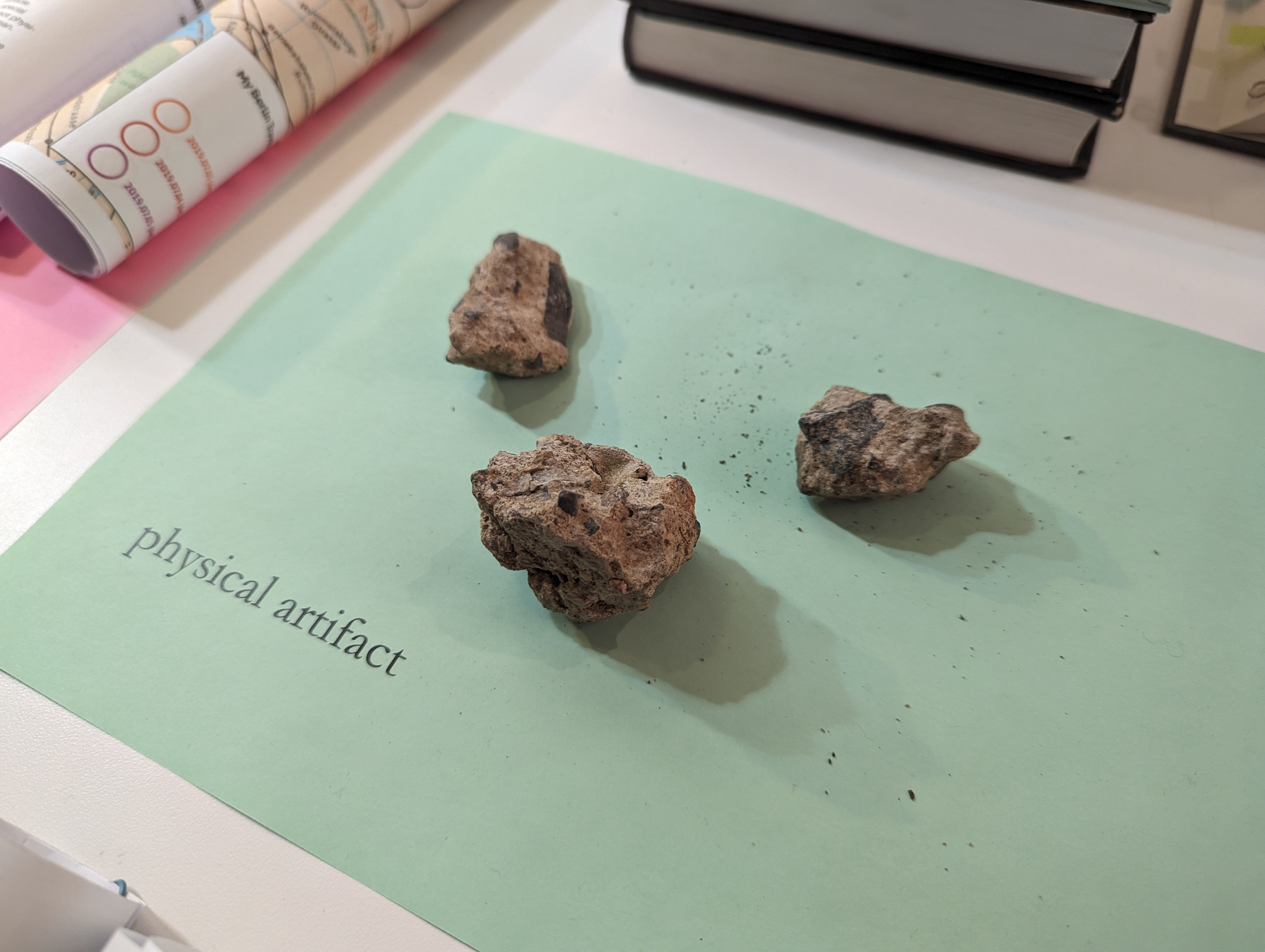
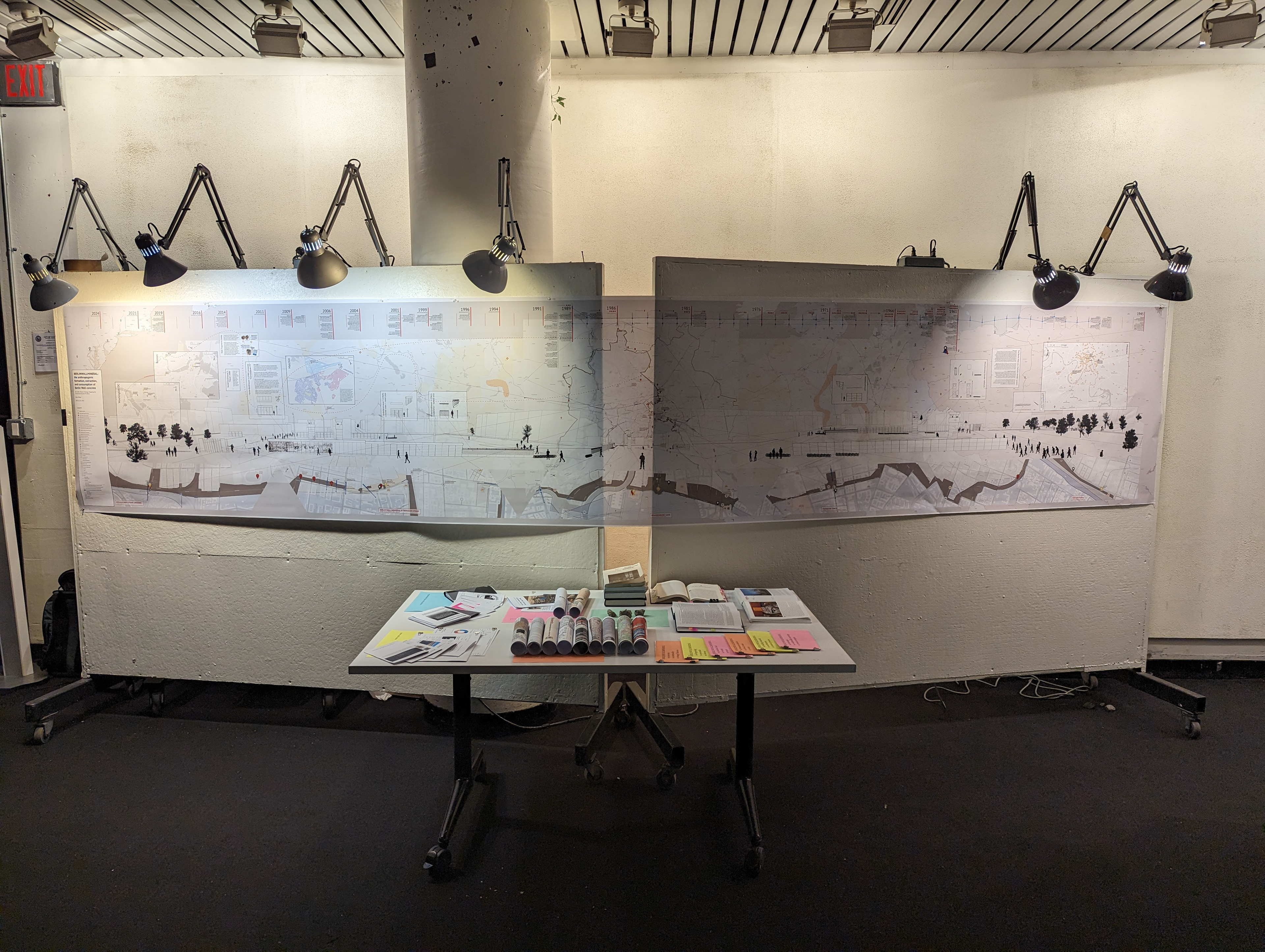
If I told you that these three rocks on the table were authentic fragments of the Berlin Wall, would you believe me? If I then told you that one of the three were an imposter that I'd found on the ground just a few minutes ago, could you tell it apart from the other two?
By tracing the musealization, geopolitics, materiality, labour, and personal entanglements of the Berlin Wall, I argue that the Berlin Wall concrete is a mineral with uniquely relational regimes of formation, extraction, and consumption: it is less like a diamond and more like a blood diamond. The exhibition, comprising a 5-metre-long multi-layered drawing, an archival table, and a performed narrative, tells the story of how this anthropogenic mineral came to be stained by an intangible yet immanent layer of value above and beyond its pure material properties.
II.
Berlin Wall as Landscape
"Brandenburg Gate and Simi Valley: the Berlin Wall landscapes of Ronald Reagan." (For DES-3241: "Theories of Landscape as Urbanism" with Profs. Gareth Doherty and Charles Waldheim.)
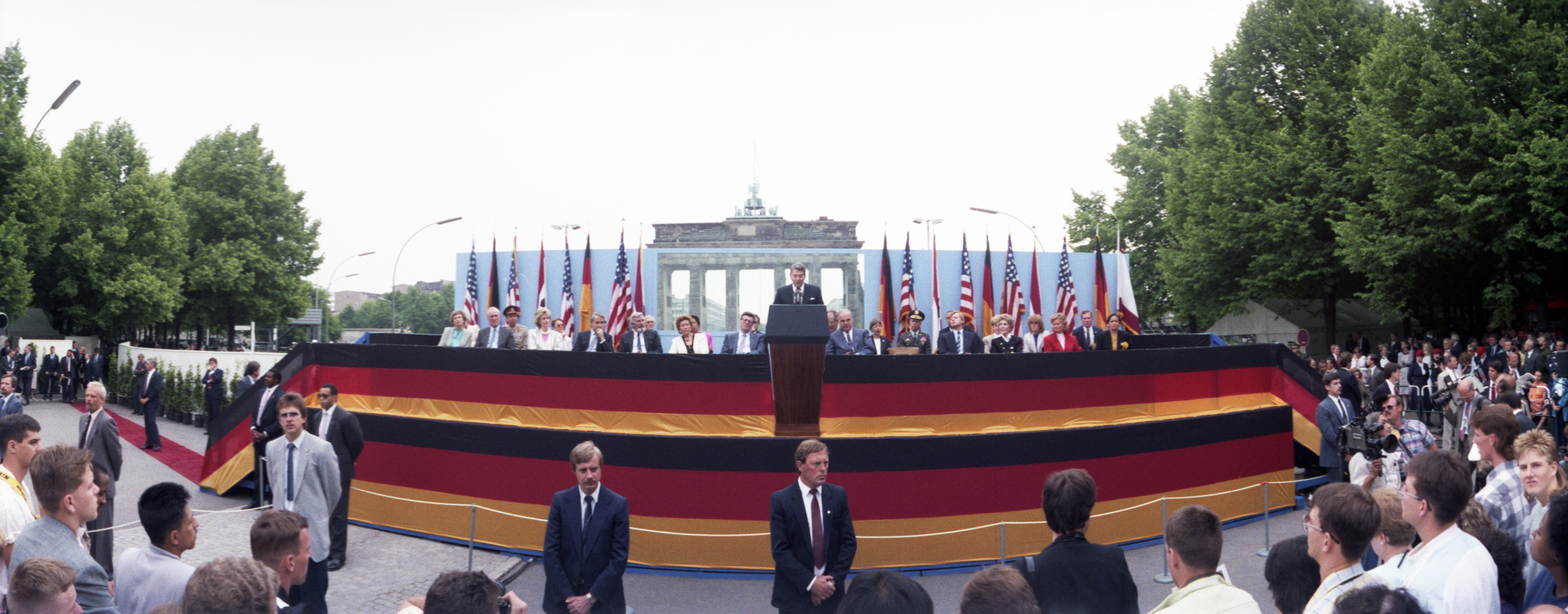
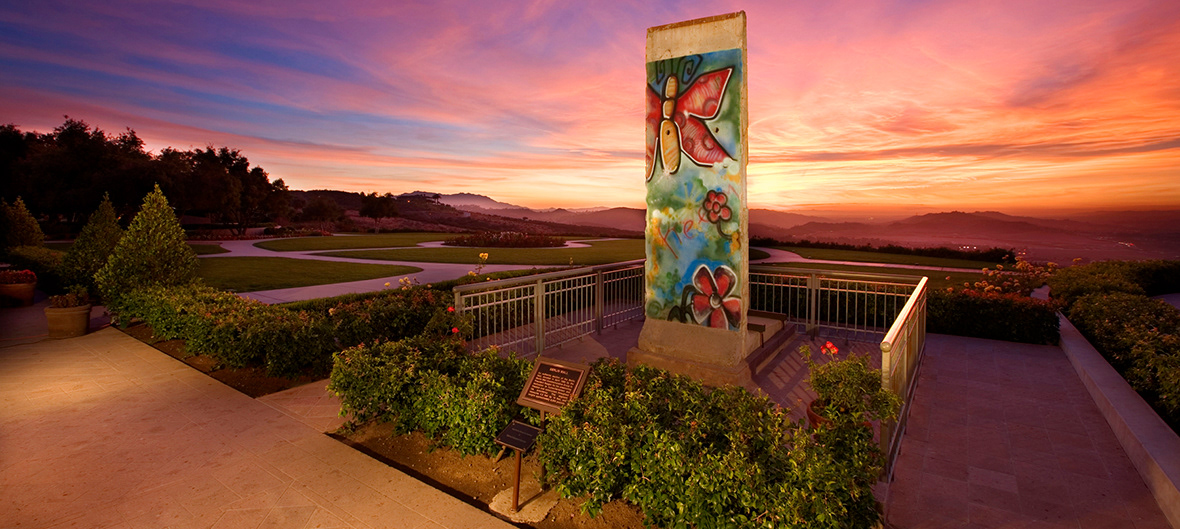
To expand on the Berlin Wall's geopolitical extraction, I researched US President Ronald Reagan's entanglement with the Wall, as exemplified in two designed landscapes, the first of which was extracted from to create the second: his 1987 speech at Brandenburg Gate in Berlin ("Mr. Gorbachev, tear down this wall!"), and the Wall fragment which stands today at his Presidential Library and Museum in Simi Valley, California.
Through a visual analysis of both landscapes, I argue that Reagan's political extraction was no accidental feat, but a carefully orchestrated and even inauthentic manipulation of gazes and narratives curated for American voters and international subjects. Though the Soviet-influenced East German regime built the Berlin Wall as a permanent bulwark against liberal democracy, it has endured for longer as the inverse: a metaphor for freedom and the failure of communism, a timeless optimism akin to Francis Fukuyama's "end of history"—which the Reagan Foundation commodifies to this day.
III.
Berlin Wall as
HAUNTED HOUSE
HAUNTED HOUSE
"Filling the voids of the Berlin Wall: stories of non-museal preservation along the inner-Berlin border." (For ADV-9674: "Proseminar in ECOLOGIES: Interrelated, In-between, Dynamic" with Prof. Chris Reed.)
The border strip between East and West Berlin was a barren no-man's land in 1989 but now features open greenspaces and transportation corridors to a much higher proportion than Berlin itself. How did this land use come to be?
To invoke Bruno Latour: If actors are those who are made to act, can we trace this causation back to the Berlin Wall as a demon pulling strings from behind the curtain?
To invoke Pablo Pérez-Ramos: What negentropic forces are acting upon the Berlin Wall to preserve it post-mortem as a zombie in defiance of equilibrium?
To invoke Anna Lowenhaupt Tsing, Traci Brynne Voyles, and Jane Hutton: How might object-oriented ontology and thick description about a given place or object related to the Berlin Wall uncover its entanglements with myriad other things? As we wander around this haunted house we call home, we must be mindful that we are not the only ones in here....
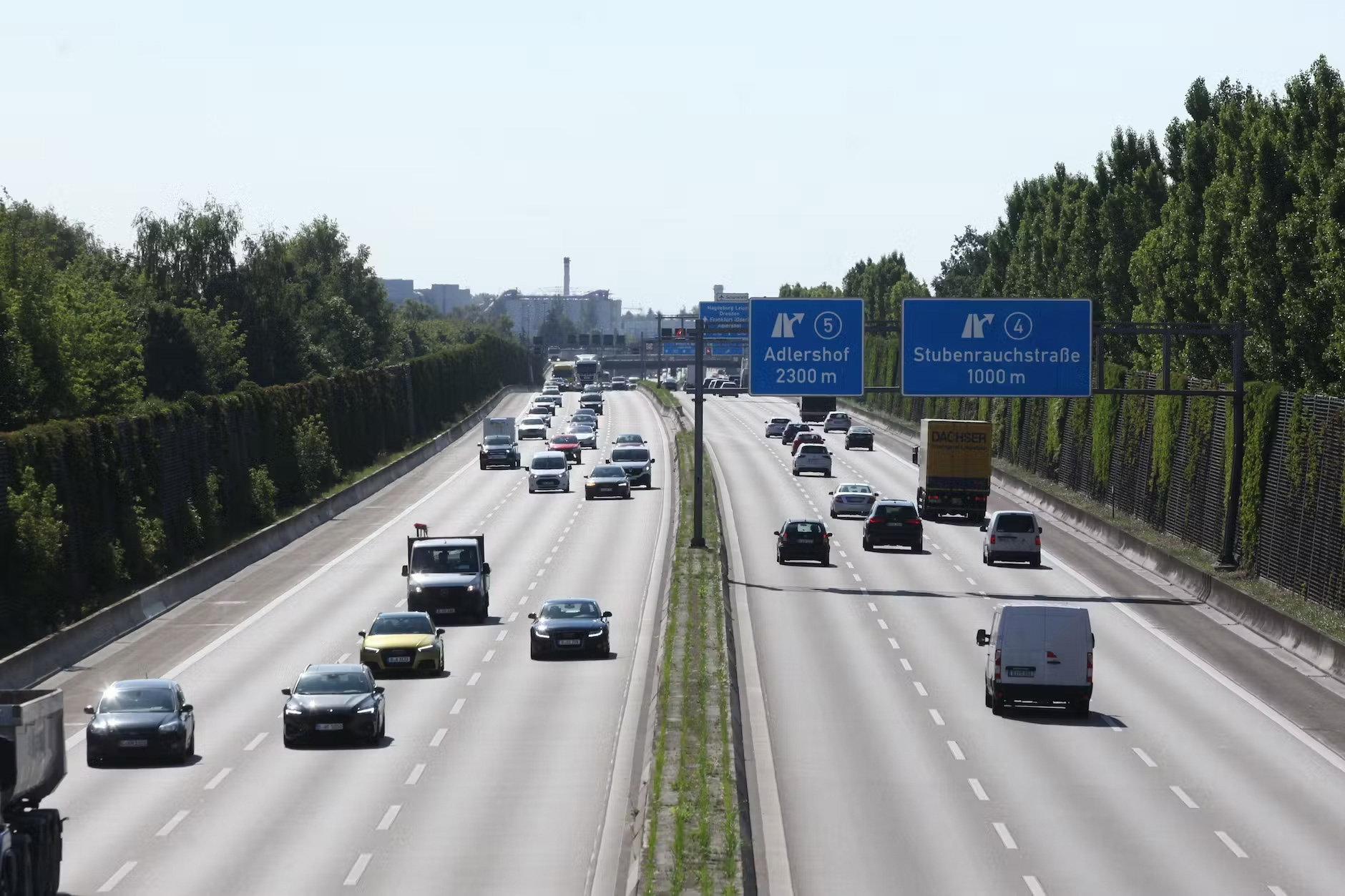
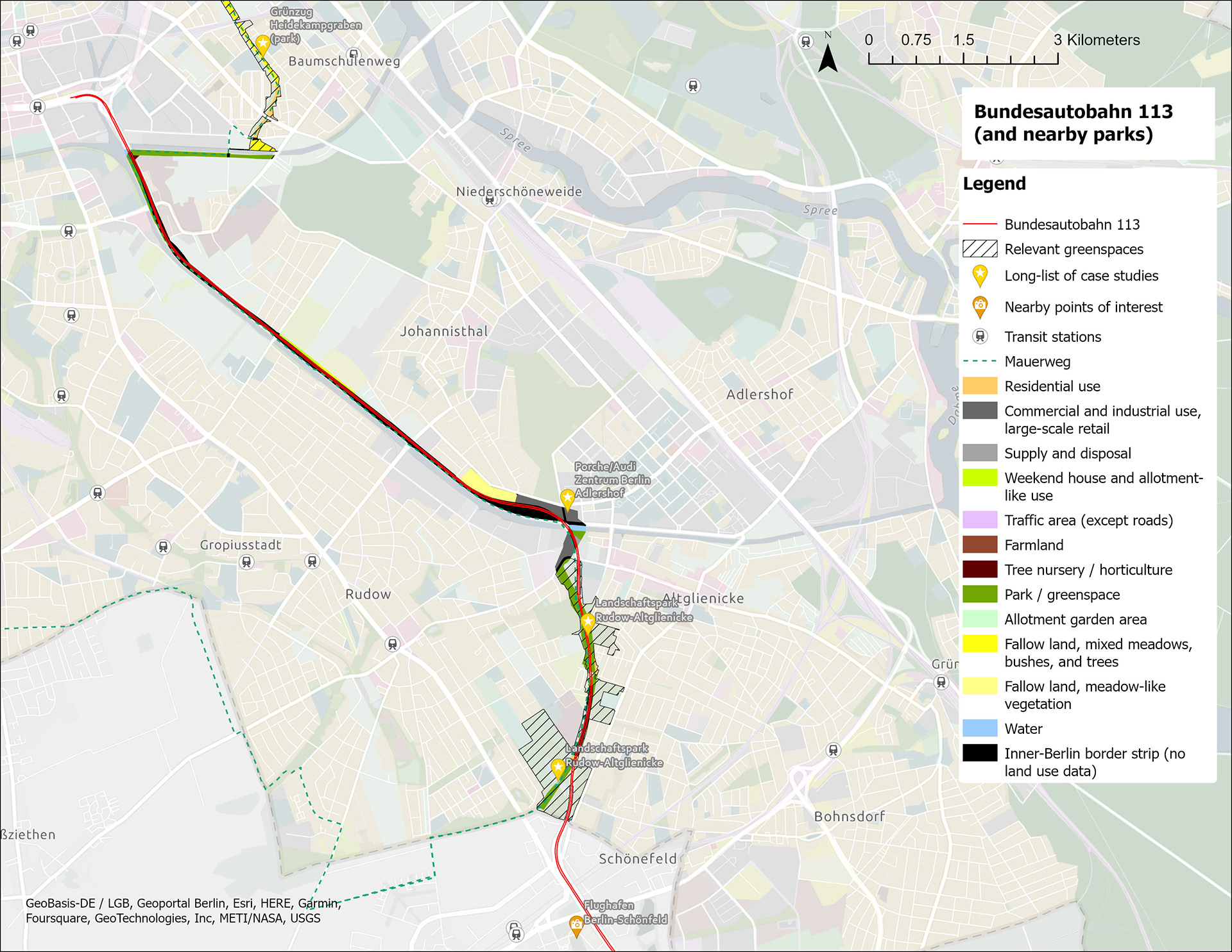
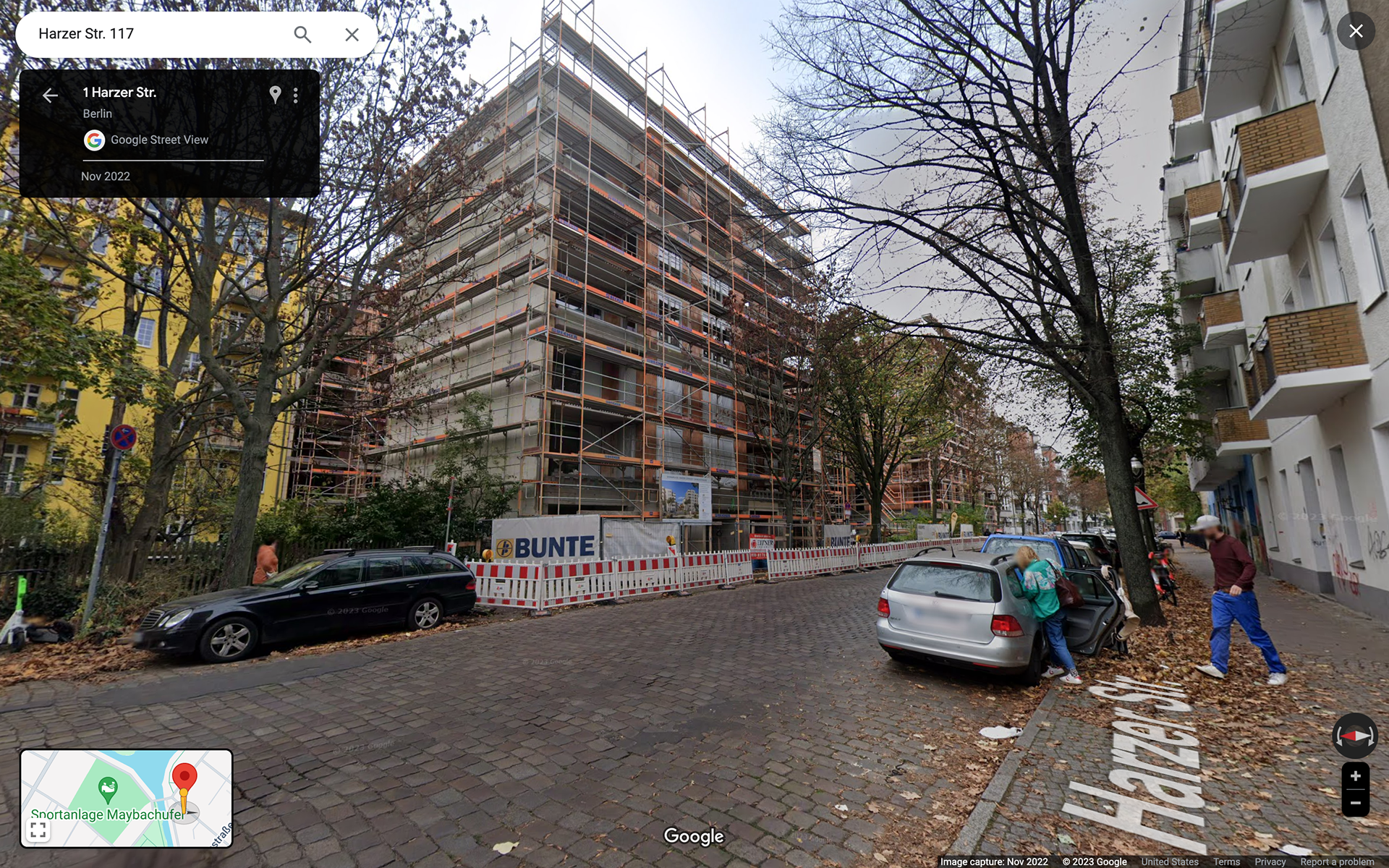
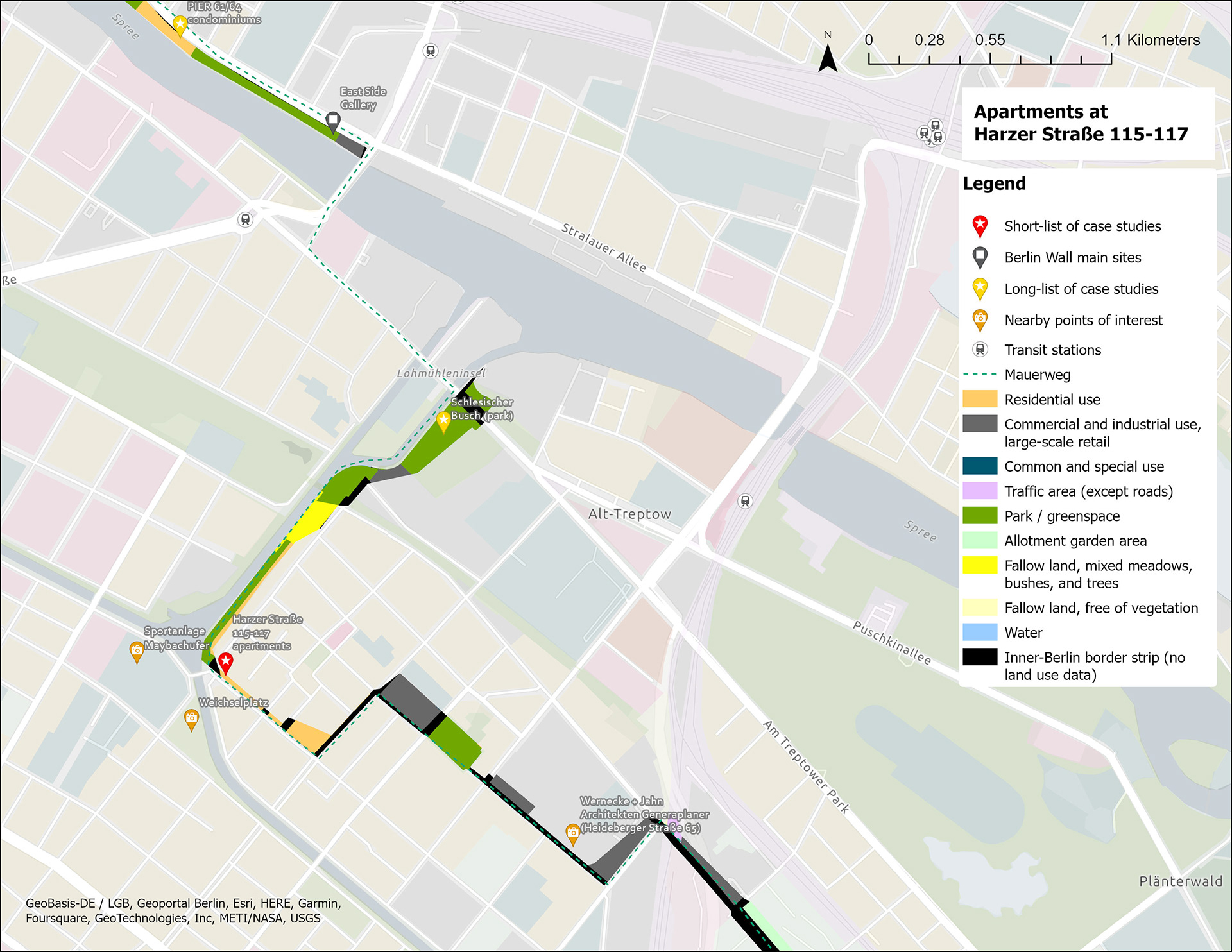
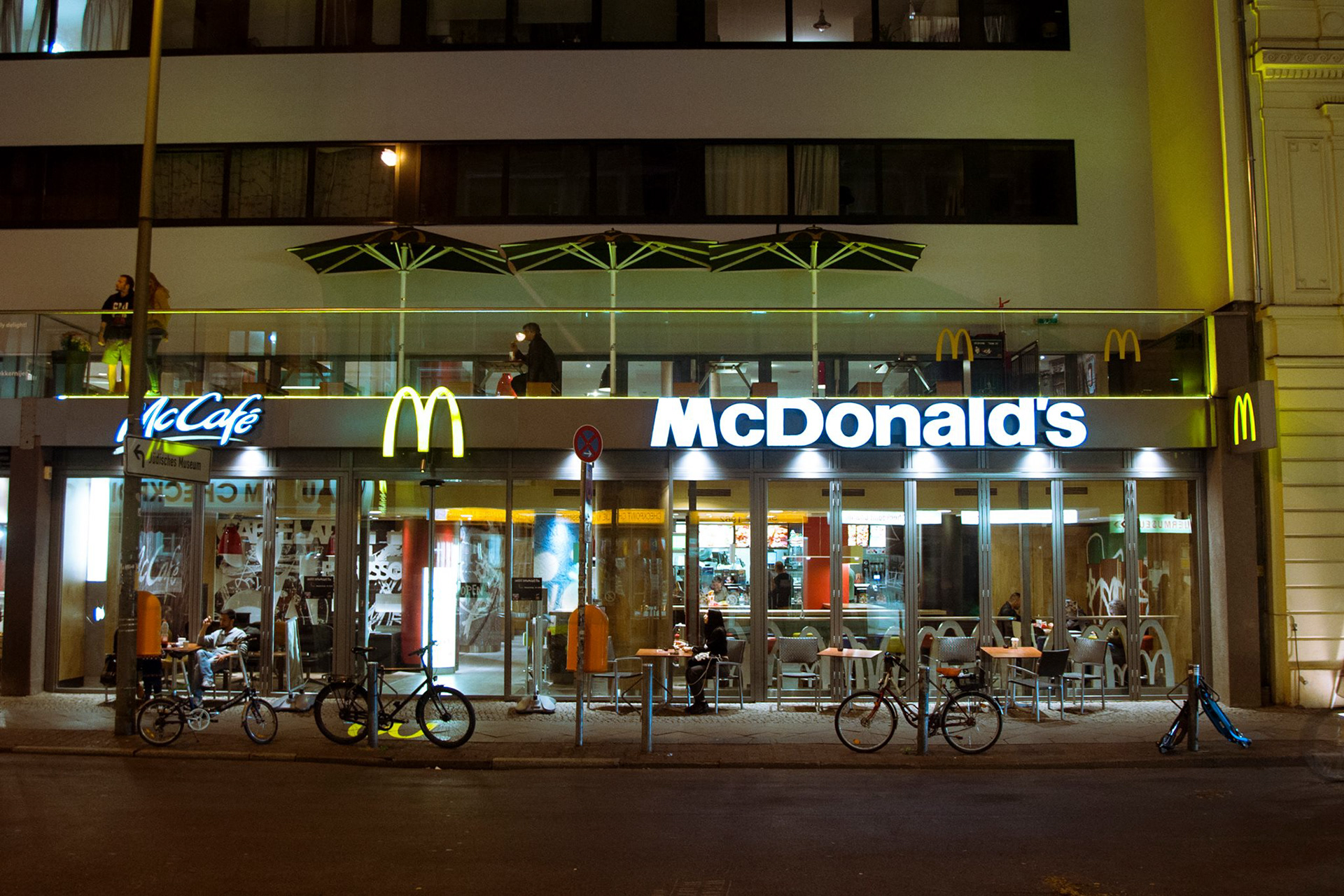

In my literature review, I identified several voids: "The Voids of Berlin" (a seminal Andreas Huyssen essay on Berlin's palimpsest of dark history), the voids along the border strip (that had to be filled in 1989 when the Wall fell), and the voids in the academic and touristic literature itself (which focuses heavily on the canonical sites of Berlin Wall commemoration but pays minimal attention to everything else in between).
To help fill these voids, I researched the stories of three dissimilar interstitials along the inner-Berlin border strip: the Bundesautobahn 113, the apartments at Harzer Straße 115–117, and the McDonald's at Checkpoint Charlie (Friedrichstaße 207). I found that all three exhibited traces of the Berlin Wall as different ghosts: as an ideologically-aligned yet pragmatic space, as a historical wound for architecture to mend, and as a site of spectacle to nourish the experience economy, respectively. The Berlin Wall's phantom presence is alive and well in its haunted house.
These findings point towards an "expanded field" of preservation. We will never achieve a holistic grasp of the ways we are haunted by the past if we do not look beyond the museal—beyond the places explicitly consecrated to remembering said past. By channelling this expanded field of preservation, can the multi-billion-dollar heritage industry help our organizations and communities connect to our cultural values? Can we imagine a future that has learned from the trauma of wall-building?
All in all, I believe there is a fertile opportunity for a poststructuralist reading of the Berlin Wall as Haunted House, particularly through the theories of Jean Baudrillard, Gilles Deleuze, and Jacques Derrida. Their work provided much of the initial stimulus for my investigation, but my outputs ended up laying out the groundwork to justify a poststructuralist lens more than actually interpreting through said lens—a future project, perhaps? In other words, I have highlighted the post-structure's existence, but have yet to articulate its ramifications on design, ecology, and philosophy.
"Post-structure-ism": the rhizomatic afterlives of structures in our built environment, interpreted poststructurally....
Other voids remain, too. There are countless more interstitial sites to look at, especially informal forms of placemaking. There are many more forms of data gathering to try, such as ethnography. And there are more lenses on preservation to apply that look beyond land use itself, towards a broader concept of thermodynamic equilibrium (see below).
IV.
Full-Length Outputs
I. Berlin Wall as Mineral:
—final presentation (video)
—drawing (PDF)
II. Berlin Wall as Landscape:
—design research dossier (PDF)
III. Berlin Wall as Haunted House:
—slide deck (PDF)
—research essay (PDF)
—final presentation (video)
